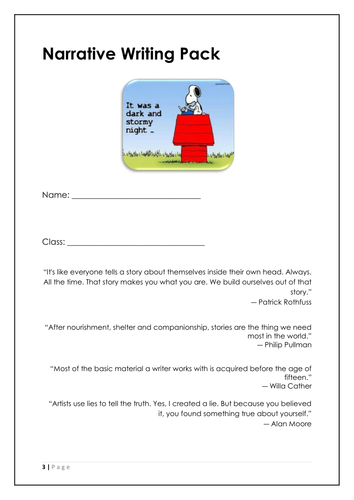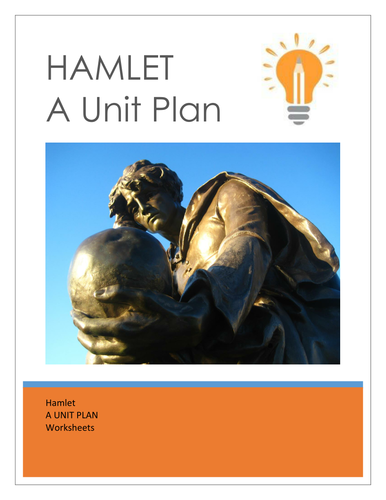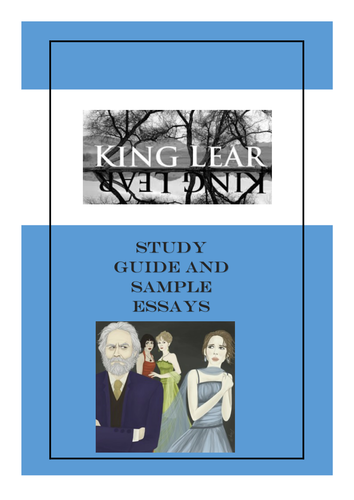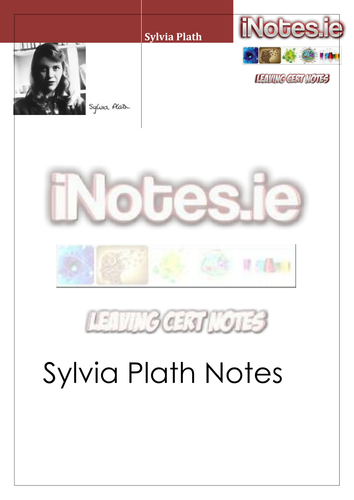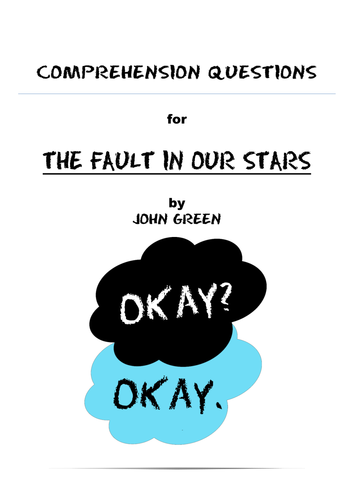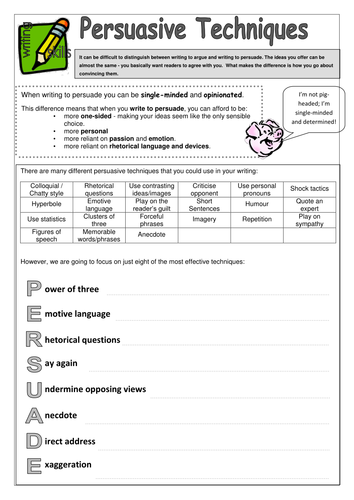
426Uploads
101k+Views
7k+Downloads
English language arts

King Lear Act 1 Scene 5 Worksheet
Multiple Choice Questions
Four questions focusing on Act 1 of King Lear, specifically Lear’s actions and mental state. These questions assess students’ understanding of the early plot and the interactions between Lear, his daughters, and the Fool. Topics include Lear’s fear of madness, his confrontation with Goneril, and the role of the Fool as a truth-teller.
2. Fill-in-the-Blanks with Quotes
This section helps students recall and complete important quotes from the play. It includes four key quotes that deal with Lear’s growing awareness of his mistakes, his regret towards Cordelia, and his early expressions of madness.
3. PEE Chains (Point, Evidence, Explanation)
Two tasks encourage students to construct PEE paragraphs, which develop their ability to analyze Lear’s character development and his relationship with the Fool:
Task 1: Focuses on how Lear’s character changes from Act 1, Scene 1 to Act 1, Scene 5, particularly his growing fear of madness.
Task 2: Explores the Fool's role as Lear’s conscience and truth-teller, using sentence starters to help students analyze their interactions.
In both tasks, sentence starter suggestions for Point, Evidence, and Explanation are provided, giving students a structured approach to their analysis.
4. Matching Exercise – Quotes and Themes of Madness
This section is a matching exercise where students pair quotes from King Lear with corresponding themes related to madness. The quotes illustrate Lear’s fear of madness, regret, and identity crisis, while the themes highlight key aspects of Lear’s psychological unraveling and how it is reflected by the Fool.
The worksheet balances comprehension with deeper analysis, offering students both recall-based tasks and opportunities for analytical writing.

Where the Crawdads Sing
Where the Crawdads Sing", is a comprehensive teaching resource based on Delia Owens’ novel. It includes:
Book Introduction and Reviews: Provides critical insights and context for the novel, including thematic connections to nature, isolation, and human relationships. This section could be used to initiate classroom discussions and offer students a deeper understanding of the novel’s critical reception.
Chapter Summaries: Organized by parts and chapters, this breakdown offers a clear roadmap of the novel’s structure, which teachers can use to guide lessons, assign readings, or discuss key plot points.
Character Analyses: Detailed profiles of key characters like Kya, Tate, and Chase Andrews are provided, enabling teachers to explore character development, motivations, and relationships. These profiles also offer quotes that can be used for in-class analysis.
Discussion Questions: Thought-provoking questions are available for every major plot point and theme, ideal for fostering critical thinking, class debates, and deeper understanding of character dynamics and thematic elements.
Historical Context and Setting: Explains the relevance of the marshland setting, Kya’s isolation, and how the environment mirrors her personal struggles. This can be integrated into lessons on geography, history, or literature, helping students to connect the setting with the protagonist’s development.
Nature Journal Activity: An interactive task idea where students create a nature journal, encouraging creativity and a deeper connection to the natural world—one of the novel’s central themes.

King Lear - Themes Revision
Product Title: Comprehensive King Lear Theme and Justice Analysis Guide
Product Overview: This in-depth study guide offers a focused examination of key themes and justice in Shakespeare’s King Lear, designed for students and educators looking to explore the play’s complex moral and ethical questions. It delves into two critical areas: the dynamics of love and different forms of justice—divine, human, and social—within the play, providing structured analyses, key quotes, and discussion prompts.
Features:
Thematic Exploration:
Detailed breakdown of love in King Lear with examples of pure, selfless love vs. selfish, corrupt love.
Examination of how love is developed through character arcs, pivotal scenes, and turning points.
Discussion on the relationship between love and loyalty, highlighting characters such as Cordelia, Kent, and Edgar.
Justice in King Lear:
Thorough analysis of divine, human, and social justice, discussing characters’ actions and their consequences in terms of morality.
Insight into Shakespeare’s reflection on divine justice and human suffering, with Gloucester and Edgar’s moral journeys highlighted.
Critical Thinking Prompts:
Guided questions to help students analyze the introduction, development, and resolution of themes.
Opportunities to reflect on the relevance of these themes in understanding human behavior and societal constructs.
Ideal For:
High school and university students studying Shakespeare.
English literature teachers seeking classroom resources.
Anyone preparing for essay writing or exams focused on King Lear.
This guide simplifies complex ideas, providing accessible yet detailed content, perfect for boosting comprehension of one of Shakespeare’s most profound tragedies.

King Lear Act 3 scene 4 Worksheet Quiz
This King Lear Act 3, Scene 4 Writing Task (Scaffolded) resource is a targeted worksheet designed to help students analyze Lear’s mental breakdown and evoke sympathy through structured writing. The worksheet combines multiple-choice questions, fill-in-the-blank exercises, and scaffolded paragraph tasks, offering students clear and practical steps to understand and explore key moments from Act 3, Scene 4.
Key Features:
Multiple-Choice Questions: Focused questions test students’ understanding of Lear’s actions, emotions, and interactions in Act 3, Scene 4.
Fill-in-the-Blank with Word Bank: Students complete sentences using key vocabulary, reinforcing their understanding of Lear’s mental state, Edgar’s disguise, and the symbolic storm.
Mix-and-Match Exercise: Students match Lear’s emotions, such as desperation, madness, and recognition of injustice, with specific quotes from the scene. This activity encourages critical thinking and direct engagement with the text.
Scaffolded Paragraph Writing:
Paragraph 1: Students analyze Lear’s disintegration, using a step-by-step process to incorporate quotes and analyze how his madness, bitterness, empathy, and recognition of injustice unfold in the scene.
Paragraph 2: Students write about whether they feel sympathy for Lear, following scaffolded prompts to consider Lear’s suffering and previous actions, with textual evidence to support their conclusions.
Educational Benefits:
Structured Learning: The scaffolded approach makes complex analysis more accessible, allowing students to gradually build strong analytical paragraphs.
Enhanced Critical Thinking: Through targeted questions and exercises, students are encouraged to think deeply about Lear’s emotional and psychological state.
Textual Engagement: The use of direct quotes helps students improve their understanding of Shakespearean language and its relation to character development.

Comprehensive Study Guide for Chapter 1-9 Where the Crawdads Sing
Comprehensive Study Guide for Chapter 1-9 Where the Crawdads Sing
Dive into the world of Delia Owens’ Where the Crawdads Sing with this thorough study guide, designed for students, educators, and literary enthusiasts. This guide provides everything needed to explore the novel’s complex themes, characters, and social context, making it the ideal companion for both in-depth analysis and exam preparation.
Key Features:
Extended Literary Genre Analysis: Breaks down Owens’ narrative techniques, including the blend of murder mystery, coming-of-age, and nature writing. Analyzes how Owens’ unique storytelling style and use of symbolism, foreshadowing, and dual timelines bring depth to Kya’s journey of resilience and survival.
Detailed Cultural Context: Examines the social, cultural, and political landscape of the American South in the 1950s-60s. Insightful explanations cover Kya’s isolation due to class prejudice, gender expectations, racial segregation, and economic hardship, providing a fuller understanding of the novel’s social dynamics.
Character Development and Thematic Exploration: In-depth discussions of Kya’s emotional growth, survival instincts, and relationship with nature. Tracks her character evolution alongside themes of isolation, love, betrayal, and justice, using specific examples from the text to illustrate key moments.
Blended Genre and Structural Analysis: This guide outlines how Owens’ narrative blends different genres—from suspenseful murder mystery to lyrical nature writing. It breaks down the structural techniques, such as the prologue and dual timelines, that shape the novel’s pacing and reveal Kya’s inner world.
Essay and Discussion Prompts: Includes scaffolded essay tasks and prompts that encourage critical thinking and engagement with the text. Each task features a structured approach to help students explore Owens’ use of literary techniques and the novel’s cultural implications.
Benefits:
Enhanced Understanding: Offers a nuanced view of the novel’s literary and social elements, helping readers uncover layers of meaning behind Kya’s story and Owens’ narrative choices.
Comprehensive Study Aid: Perfect for exam preparation, assignments, or literary discussions, this guide condenses essential analysis into structured sections for easy comprehension.
Insights on Key Themes and Symbols: Encourages deeper exploration of themes such as nature’s role as a nurturer, prejudice, loneliness, and the fight for identity, allowing readers to fully appreciate Owens’ thematic intentions.
Scaffolded Analysis for Essays and Exams: With clear essay structures and sample analyses, students can confidently develop well-rounded responses and insights for academic assessments.

King Lear Act 3 Revision Worksheet
Plot Summary
Summarize key events in each scene of Act 3, focusing on character actions and developments that drive the plot forward. This includes Edmund’s deception, Lear’s reaction to the storm, and Gloucester’s loyalty to Lear.
Key Quotes
Identify and interpret significant quotes in Act 3, connecting them to characters’ emotions, conflicts, and themes, like Lear’s mental turmoil and his view of justice.
Themes
Explore the main themes of Act 3, including Madness, illustrated by Lear’s descent into confusion, and Loyalty and Betrayal, highlighted through Gloucester’s loyalty to Lear despite betrayal.
Character Development
Examine character growth in Act 3, especially focusing on Lear’s reflections during the storm and Gloucester’s moral choices, revealing shifts in their priorities and self-awareness.
Multiple-Choice Questions
Test comprehension with multiple-choice questions that reinforce understanding of key moments and character motivations in Act 3.

Master the Art of Expression: Your Ultimate Guide to Leaving Certificate English Paper 1
Master the Art of Expression: Your Ultimate Guide to Leaving Certificate English Paper 1
Unlock the secrets to success in the Leaving Certificate English Paper 1 with this comprehensive guide to mastering the five key modes of language: Information, Argument, Persuasion, Narration, and Aesthetic Use. Whether you’re crafting a compelling argument, weaving vivid imagery into a narrative, or analyzing the persuasive techniques of a writer, this guide equips you with the tools, vocabulary, and strategies to excel.
What’s Inside?
Expert Analysis: Learn to decode the nuances of language and understand what examiners look for.
Key Vocabulary & Phrases: Tailored lists to elevate your answers in comprehension and composition tasks.
Practical Examples: Real-world applications of techniques across all modes of language.
Step-by-Step Guidance: From structuring essays to responding effectively to comprehension questions.
Exam-Tailored Tips: Proven strategies to maximize marks in each section, including advice on timing and planning.
Why This Guide?
This resource demystifies the marking criteria of Clarity of Purpose, Coherence of Delivery, Efficiency of Language Use, and Accuracy of Mechanics. Written with the Leaving Certificate student in mind, it provides clear, actionable advice to boost your confidence and ensure your writing stands out.
Elevate your writing. Enhance your understanding. Ace Paper 1. Start your journey to exam success today!

Macbeth Quick Emoji Visual Guide
his Macbeth emoji visual guide summarizes each act of the play through key emojis, capturing major events, emotions, and symbols. From the witches’ prophecy and Macbeth’s rise to power to Lady Macbeth’s descent into madness and Macbeth’s tragic downfall, each act includes emojis representing characters, settings, and themes, like the crown for ambition, dagger for murder, and ghost for haunting guilt. This engaging, visual shorthand provides a memorable overview of the play, making it easier for students to recall plot points and key themes in each act.

Act 4 +5 Visual Guide
The visual guides for Acts 4 and 5 of King Lear bring the drama of Shakespeare’s scenes to life with a moody, evocative style that captures the tragic intensity of each moment.

Hamlet PowerPoint - Stickman Version
Hamlet PowerPoint
Stickman version of Hamlet. Great for lower ability students. Each slide has the original text and a visual stick cartoon aid to help understanding











